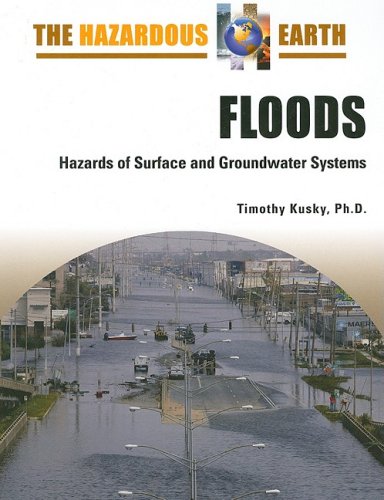

Most ebook files are in PDF format, so you can easily read them using various software such as Foxit Reader or directly on the Google Chrome browser.
Some ebook files are released by publishers in other formats such as .awz, .mobi, .epub, .fb2, etc. You may need to install specific software to read these formats on mobile/PC, such as Calibre.
Please read the tutorial at this link. https://ebooknice.com/page/post?id=faq
We offer FREE conversion to the popular formats you request; however, this may take some time. Therefore, right after payment, please email us, and we will try to provide the service as quickly as possible.
For some exceptional file formats or broken links (if any), please refrain from opening any disputes. Instead, email us first, and we will try to assist within a maximum of 6 hours.
EbookNice Team

Status:
Available5.0
13 reviews
ISBN-10 : 0816064687
ISBN-13 : 9780816064687
Author: Timothy Kusky
There are many different types of floods, ranging from slowly rising regional floods to dramatic flash floods and coastal floods. Floods have become increasingly hazardous over the last 200 years, as people have been moving onto floodplains and modifying rivers, streams, and entire river systems. Human modifications to rivers and floodplains have resulted in more frequent, stronger, and faster moving floods. Considered the most common natural hazard, floods affect more people and cause more damage than any other hazard including earthquakes, volcanic eruptions, landslides, and tsunamis.
Floods examines the processes that control the development and flow in stream and river systems and discusses how and when these processes become hazardous. Examples of flooding and other river disasters are presented throughout this accessible book. The merits of building on versus preserving floodplains are discussed, and strategies for preserving the remaining floodplain areas are examined. Black-and-white photographs and line illustrations, an index, a glossary, sidebars, and tables enhance this rich resource.
Page 1: Title Page
Give a definition of a geohazard (Notes)
Page 2: Landslides
Give a definition of a landslide (Notes)
What do you think is the best way to prepare for landslide damage (Notes)
Draw a picture (Page 145)
What areas do landslides occur in? (Page 145)
Page 3: Earthquake
Give a definition of an earthquake (Page 218)
Where do earthquakes generally occur? Name one particular area (Page 218)
What do you think is the best way to prepare for earthquake damage (Notes)
Draw a picture
Page 4: Volcano
Give a definition of a volcano (Glossary)
How can pyroclastic clouds and lahars effect the environment? (Notes)
What do you think is the best way to prepare for volcano damage?
Draw a picture
Page 5: Tsunamis
Give a definition of a tsunami (Page 230)
What lead to the creation of a Tsunami Warming System? (Page 231)
What do you think is the best way to prepare for tsunami damage? (Notes)
Draw a picture (Page 230)
Page 6: Sinkholes
Give a definition of a sinkhole (Page 178)
What do you think is the best way to prepare for sinkhole damage? (Notes)
Draw a picture (Page 179)
Name one way in which a sinkhole might occur (Page 179)
Page 7: Groundwater Pollution
Define groundwater (Glossary)
Name one way in which groundwater may become contaminated (Page 175)
What do you think is the best way to reduce groundwater pollution? (Notes)
Draw a picture (Page 176)
Page 8: Flooding
How can human interference cause a flood? (Page 169)
Detine a flood (Page 168)
What do you think is the best way to reduce flood damage? (Notes)
Draw a picture
flood water hazards
surface water hazards
floods natural hazard
are floods surface processes
a flood hazard exists when an area floods
Tags: Floods, Hazards, Surface, Groundwater Systems, Hazardous Earth, Timothy Kusky